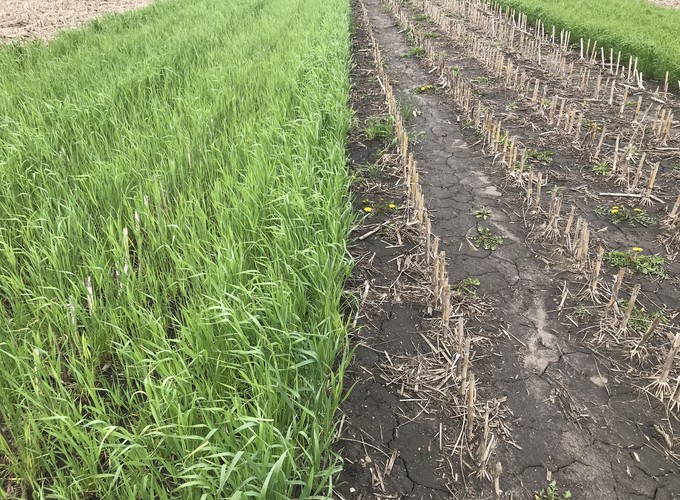Acknowledgements:
This project is way bigger than me. The primary investigator is Gina Nichols in conjunction with Stefan Gailans and Sarah Carlson at Practical Farmers of Iowa. Further support was provided by Matt Liebman. I jumped on board to help with species identiciation and diveristy analysis. I also like working with Gina Nichols.
Disclaimer: Thoughts are my own.
A short preamble:
In Iowa, the major cropping system is a two-year rotation of corn and soybeans. These two species are warm-season crops, which means they primarily grow during the warm months: May - October. While the whole state seems to green up during the summer, during the off season (November - April (ish)), the soil is largely bare. It’s not hard to imagine that having no vegetation for at least half the year + precipitation will result in massive amounts of erosion and nutrient runoff.
Enter cover crops. Sown in the fall and killed (“terminated”) in the spring, cover crops are meant to provide continuous cover on the landscape. Besides holding the physical soil in place with their roots, cover crops can also take up excess, available nutrients that might otherwise leave the field. Hence they are a nice option for an in-field conservation practice that fits within our annual cropping system in Iowa.
The question of this research project, however, regards the effects of cover crops on weeds. Weeds are ubiquitous plagues for farmers. They can cause serious yield loss. Furthermore, many weed species now exhibit resistance to at least one form of herbicide, which has been the dominant method of control for the last two decades. It’s therefore becoming increasingly necessary to have alternatives methods of controlling weed populations.
Utilizing long-term cover cropping trials, this project aimed to see whether the weed seed bank (which represents the legacy of weed control in these systems) differed between cover-cropped and non-cover cropped treatments. Since cover crops begin growing in the fall and provide cover over the winter, the thought is that they might be able to help suppress early emerging weeds and reduce the weed seedbank over time.
More results forthcoming!
